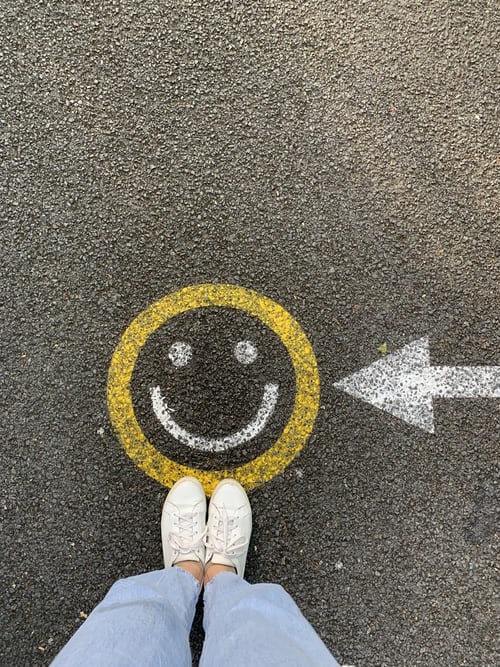There’s no better feeling than reminiscing about life in the good ole days. You know, before mobile phones, the internet, and microwaves. When there were no text messages to interrupt your day, no instant “likes” to make you feel good, and no 2-day shipping with a 100% return and refund policy.
We are told we live in the safest and healthiest time in human history — so Harvard Psychology Professor Steven Pinker tells us. The “good old days” were less secure and beneficial than we may assume while fondly reminiscing about life in the past.
Yet researchers know that when we reminisce about life, our memories — and the feelings and emotions they evoke — tend to skew positive.
If life was objectively more difficult in the past, why does our reminiscing tend to do this? Why do we view our history through the rose-colored lens?
Good Feelings Outweigh the Bad
Negative feelings from our memories diminish faster than positive ones. This is known as the "fading affect bias."
In a study published in the Review of General Psychology, participants recorded memories and rated how they felt about each memory. Three weeks later, participants rated their feelings for those memories. The study shows that we leave more positive feelings overall for our aggregated memories. Negative emotions related to bad memories tended to diminish faster than positive feelings related to good memories.
So, why does this happen? Is it because we distort our life events to be more positive when we experience them?
Probably not. In another study, participants recorded events in their life as they occurred and how they felt about them — a diary. At the events, negative feelings were just as strong as positive ones.
After some time (3.5 months, one year, and 4.5 years), the participants re-rated how they felt about the life events. As in the previous study, the intensity of negative feelings around bad events faded significantly faster than positive feelings for suitable events. This suggests that your brain prioritizes positive emotions when reminiscing about life.
More Good Memories Than Bad Memories?
Participants recalled childhood memories in a study published in Psychological Monographs: General and Applied. They then rated their memories as pleasant, unpleasant, or neutral. People reported 50% pleasant memories, 30% unpleasant, and 20% neutral.
Another study re-created this research using a sensory deprivation tank to ensure nothing in the room somehow influenced people's positive emotions. The responses changed. Now participants reported 66% pleasant memories and 33% unpleasant ones. Of the 20% neutral memories, virtually all became positive.
Interestingly, even for memories that we recall involuntarily — those that randomly pop into our minds throughout the day (what we call “MindPops™”) — positive recollections outnumber negative ones. The data showed that 49% of these involuntarily recalled memories were pleasant, while only 19% were unpleasant.
Not only do we have more positive memories than negative ones, but the bad feelings from our negative memories also dissipate faster, leaving us with happier feelings for our memories overall.
What does all this mean for you?
It means that when you're reminiscing about life, you are far more likely to recollect something positive and feel positive. Over time, your perspective of past events will become more positive.
Furthermore, reminiscing about life in the past is good for your health. A sense of nostalgia can increase psychological resilience, improve relationships, and boost mood and self-esteem, thereby helping to enhance your overall emotional and psychological well-being.
Want to harness your memories as a means to greater well-being? Visit My Stories Matter to start recording your memories for free!
To learn more about the positive feelings associated with reminiscing, check out this article: Why You Get Happier as You Age.
Studies Referenced
- Cason, H. (1932). The learning and retention of pleasant and unpleasant activities. Archives of Psychology, 134, 1–96.
- Conway, M., & Ross, M. (1984). Getting what you want by revising what you had. Journal of Personality and Social Psychology, 47, 738–748.
- Holmes, D. S. (1970). Differential changes in affective intensity and the forgetting of unpleasant personal experiences. Journal of Personality and Social Psychology, 3, 234–239.
- Matlin, M. W., & Stang, D. J. (1978). The Pollyanna principle. Cambridge, MA: Schenkman.
- Robinson, J. A. (1980). Affect and retrieval of personal memories. Motivation and Emotion, 4, 149–174.
- Ross, M. (1997). Validating memories. In N. K. Stein, P. A. Ornstein, B. Tversky, & C. Brainerd (Eds.), Memory for everyday and emotional events (pp. 49–81). Mahwah, NJ: Erlbaum.
- Suedfeld, P., & Eich, E. (1995). Autobiographical memory and affect under conditions of reduced environmental stimulation. Journal of Environmental Psychology, 15, 321–326.
- Thompson, C. P., Skowronski, J. J., Larsen, S., & Betz, A. (1996). Autobiographical memory: Remembering what and remembering when. New York: Erlbaum.
- Waldfogel, S. (1948). The frequency and affective character of childhood memories. Psychological Monographs, 62 (Whole №291).
- Walker, W.R., Skowronski, J. J., & Thompson, C. P. (2003). Life Is Pleasant — and Memory Helps to Keep It That Way!. Review of General Psychology Vol. 7, №2, 203–210.
- Walker, W. R., Vogl, R. J., & Thompson, C. P. (1997). Autobiographical memory: Unpleasantness fades faster than pleasantness over time. Applied Cognitive Psychology, 11, 399–413.
- D. T., & Axsom, D. (2000). Focalism: A source of durability bias in affective forecasting. Journal of Personality and Social Psychology, 78, 821–836.



